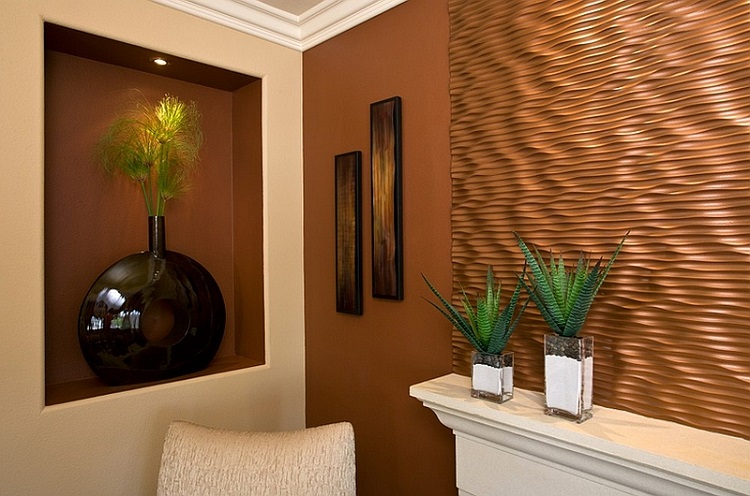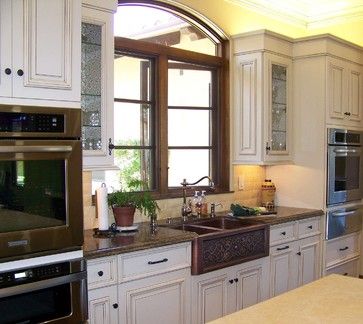The Art Of Copper Decor Craftsmanship And How To Avoid Common Pitfalls When Designing With Copper
A lot of homeowners all over the US right now have at least one copper decor item in their home. Whether it be a prized collection of copper pans hanging up in the kitchen or a copper planter in the living room area, this interior design trend has gained a lot of "followers" in recent years due to the many desirable qualities that copper boasts, enabling it to add warmth, charm and rustic appeal to virtually any environment that it's added to. Part of its appeal also lies in its relative uniqueness since it doesn't look like your typical mass produced item that's pumped out by the million by a set of technologically advanced machines that boast a level of efficiency that no human could come close to, including the Germans, who are world renowned for their efficiency. That's right, when you buy a copper decor item you get an item that has a certain "hand produced" element to it, and while you might find yourself staring at the item's charm, have you ever thought how it was actually crafted? Probably not, but not to worry as we're going to talk you through that during this post.
The Processes and Techniques that Are Used to Shape Copper Decor Items
The techniques used to craft many of the copper items featured in those interior design magazines that are full of country home decor ideas can vary depending on where the items are produced (the items that we sell for example are expertly crafted in Turkey) and the craftsman that produces them. Often it's just a matter of personal preference with regards to which technique they choose to employ. There is one thing that remains constant however - all of the copper wall decor that you come across and other copper decorations that are constructed to beautify residential and commercial properties are produced from a flat sheet and turned into the three dimensional finished product; very rarely does either hot forging or casting work out to be an economically viable way of producing these items. Depending on the shape, size and level of detail that is required, there are various techniques that could be used to produce copper interior decor pieces, which include:
- Spinning - You might also see this referred to as either metal turning or spin forming and it's a process that is commonly used to craft items such as bowls. The process itself (pictured above) is actually very simple; it involves mounting a specially shaped block in the drive area of a lathe and then clamping the flat sheet of copper against this block. Both of these items are then rotated at extremely high speeds and the craftsman applies pressure to the copper so that it bends over the block and forms the shape he's looking to achieve. This technique does leave little marks behind on the metal, but that doesn't take anything away from the end result visually. It should be noted that the copper is first cut into a disc shape before it's worked on.
- Deep Drawing - Another technique that requires a disc to be cut from a sheet of copper, deep drawing is typically utilized to create items that have straight sides and doesn't require the base of the object to be created separately and then jointed. The sheet of copper is placed between two pressure plates over the top of a die, before being forced into or "drawn into" the die, giving the item its shape. These items may need to be drawn into the die more than once to get the desired end result.
Both of the above techniques do not require a separate base to be made, instead forming the item in one piece. However, for other items that are created in less uniform shapes, the base is cut out separately and has to be joined to the sidewalls. Some of the most common ways in which these two separate parts of a copper item are joined include:
- Dovetail Joints - Just as with items crafted out of wood, sometimes a coppersmith will join two pieces of copper together using a dovetail joint (although it does vary slightly to those used in wooden items, as you will see!). To do this, the edge of the sheet that is to be joined is subjected to a fairly extreme hammering to make the edges a lot thinner (approximately half of its normal thickness), before right-angled slits are carefully cut out of the metal. The "teeth" that are created are then matched up with the other piece of copper, with one going over the top of the corresponding sheet and the other under, with the pattern continuing in that manner across the whole piece. This area is then further hammered to join the two pieces together by force, before being given further strength through either soldering or brazing. You may also see this joint called a "cramped" joint in reference to the fact that there are no gaps between the teeth.
- Lockseams - Some craftsmen prefer to make use of lockseams rather than dovetail or cramped joints. This is a fairly simple yet effective way to joint two pieces of copper together. The edge of each piece is folded over, either by hand or using a machine facing upwards and downwards so two pieces interlock. This joint is then hammered together typically soldered to further reinforced.
So next time you're considering purchasing a new copper item for the interior of your home, you'll perhaps appreciate the amount of effort and skill that has gone into crafting that item.
Now that we know how its made lets look into what to do with it.
AVOIDING COMMON PITFALLS WHEN DESIGNING WITH COPPER
When it comes to interior design trends this year few things are as hot as copper. Whether wall treatments, lamps, countertops, backsplashes, decorative copper planters or copper wind chimes, copper decor is IN. This is not to say that copper is “in” with everything, because if you decide to make copper a prominent part of your interior decoration scheme it will create other aesthetic quandaries for you to ponder. For example: copper does not always play nice with other metals commonly found around the house. Also, your choice of color scheme will be impacted as well.

Making Copper Work With the Rest of Your Decor
Perhaps the biggest challenge when it comes to integrating copper into your interior decor is mixing it with other metals. This comes into play particularly in the kitchen, where major appliances as well as cookware need to be considered. While there are those who are adamant about not mixing metals, the fact is it can be done as long as you keep certain aesthetic principles in mind while doing so:
- Make Sure Copper is the Dominant Metal - It’s fine to mix copper with other metals as long as copper is not playing second fiddle to those other materials. Adding just a few copper touches to a kitchen dominated by oil-rubbed bronze for instance will pretty much guarantee the copper gets lost in the mix. The same can be said for a kitchen dominated by highly reflective stainless steel.
- Vary the Texture of the Different Metals - Various types of metal will work better if they aren’t all the same finish. Consider a heavily worked copper backsplash with a brushed stainless steel sink for instance. Or satin finish copper lampshades with oiled bronze hardware. Or weathered bronze wall sconces with a lightly oxidized copper vent hood. The point is: keep an open mind and mix things up. You’re sure to find a combination that works.
- Mix tones to Achieve Visual Balance - If your kitchen is shaping up to be a bastion of warm coppery tones consider introducing small, highly reflective cool brass or stainless steel accents by way of cabinet hardware or cooking peripherals. If money is no object consider white gold embellishments. But makes sure to keep any such accents just that: accents. They’re there to play off of the various copper tones, not overwhelm them.
- Exercise Restraint - You may become so enthused at the prospect of successfully mixing copper with various other metals in your decor that you over do it. Just remember, the goal of any interior decoration scheme is a lively but subtle balance of design components; not a garish display of a single element to the detriment of all others.
Another area where copper needs to be accommodated is in the color scheme of the room. Copper works particularly well with warmer hues like browns and reds, but also with blues and greens that are shifted toward a darker neutral tone. In some cases you can get away with using vibrant primary colors as accents in lieu of (or even in concert with) the highly polished brass and gold surfaces mentioned above.
Other Things to Look Out for When Designing With Copper
- Pairing Copper with Natural Stone - A copper sink surrounded by granite countertops can cause both to suffer.
 While pairing stone with copper isn’t a guaranteed recipe for disaster you need to be extremely careful in which type of copper finish you’re pairing with which type of natural stone. Instead of looking sophisticated it’s likely to just look busy or downright odd, especially if the stone is highly veined.
While pairing stone with copper isn’t a guaranteed recipe for disaster you need to be extremely careful in which type of copper finish you’re pairing with which type of natural stone. Instead of looking sophisticated it’s likely to just look busy or downright odd, especially if the stone is highly veined.
- Beware the Behemoth - If the decor in a particular room features a nice balance of smaller decorative elements, introducing something like a copper wall - whether in the form of a single sheet or ‘tiles’ - will have the effect of creating visual dissonance. That is, your brain will have a hard time resolving the different elements in a way that makes sense. Keep proportion in mind when designing with copper, or any metal.
Tip: Sometimes we can become so involved in what we’re doing that we lose the ability to view it objectively. Remember to always bring in others who aren’t invested in the decoration process in the same way you are to have a look from time to time. They’ll be able to tell you if you’ve gone too far.
Copper is an incredibly versatile material with myriad applications. The key to designing with copper is to recognize its innate tendency to shove other elements aside and demand attention. It’s hardly the only design material to do so - hello marble - but as when working with any other visually arresting material your primary concern will be finding a way to achieve balance between the copper elements of your decor and other materials, colors, fabrics and finishes.One unique way to balance out certain copper pieces in your collection is to get them engraved with something that matches your decor.

 Default Currency
Default Currency
